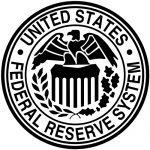Interchange on debit card transactions has changed relatively little in the nearly seven years since the Durbin Amendment to the 2010 Dodd-Frank Act took effect, but a Federal Reserve report notes one small but interesting recent change. The average interchange fee in 2017 for dual-message transactions on debit cards regulated by the amendment declined slightly while interchange for single-message transactions with regulated cards stayed the same.
The Fed says average dual-message interchange per “covered transaction”—a purchase on a debit card issued by a bank or credit union with $10 billion or more in assets and hence subject to Durbin Amendment’s price controls—was 22 cents last year versus 24 cents for transactions using the single-message format on regulated cards. Average interchange for dual-message transactions on regulated cards had been 23 cents since 2013, according to a little-noticed June report from the Fed, which Congress assigned to implement the Durbin Amendment.

Dual-message interchange traditionally has been much higher for signature debit with Visa- and Mastercard-branded cards, which is a major reason why issuers strongly promoted that variety for years. But the Durbin Amendment upended the debit market’s economics with its interchange price controls for big issuers, which command about 64% of the market. Regulated issuers get 21 cents plus 0.05% of the transaction amount, with another penny for approved fraud controls.
Now, regulated interchange moves in a much narrower range under the Fed’s Regulation II implementing the amendment. Single-message regulated interchange has averaged 24 cents since 2012, according to the report, which is based on data from the payment networks. Regulated dual-message interchange slipped 2 cents in 2013 to 23 cents and stayed there until last year.
Interchange for smaller issuers exempt from the price controls still reflects the wider pre-Durbin spread. Last year, average interchange for a dual-message exempt transaction was 52 cents versus 25 cents for exempt single-message transactions. Respective numbers for 2016 were 51 cents and 26 cents.
According to the report, exempt issuers earned 1.49% of the sale on a dual-message Mastercard transaction last year versus 1.35% for Visa. Dual-message debit transactions on the Discover network, a tiny part of the market, earned 1.49%. In all, dual-message interchange for exempt issuers averaged 1.40%.
A single-message transaction on the Visa-owned Interlink network generated 1.09% of the sale for exempt issuers in 2017, the highest among 12 domestic PIN-debit networks tracked in the Fed report. Among all the debit networks, exempt single-message interchange averaged 0.67%.





